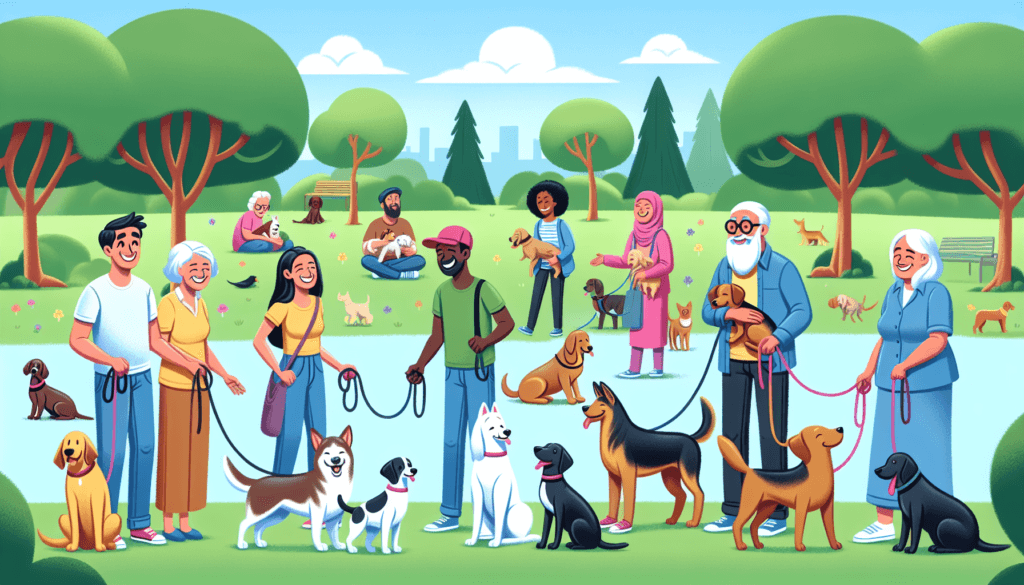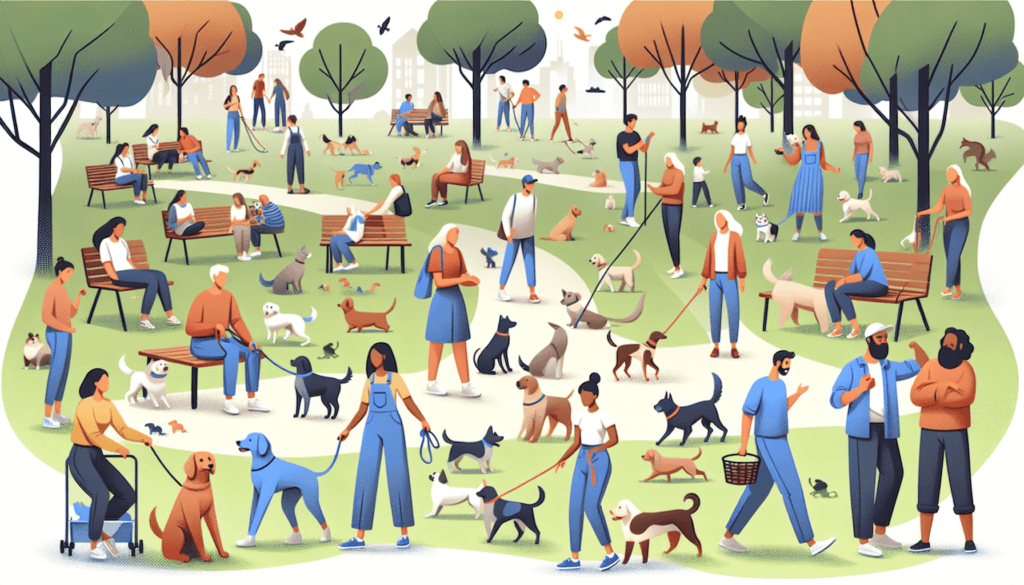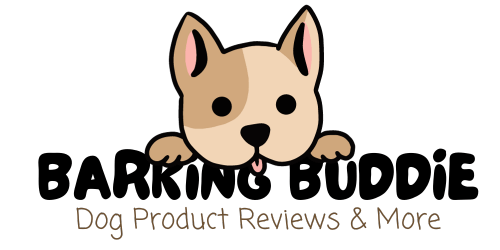Are you passionate about dogs and part of a thriving dog community? If so, you may already know the importance of creating inclusivity within this community. Whether you are a dog owner, a pet professional, or simply an admirer of our furry friends, fostering an inclusive environment is vital for everyone involved. In this article, we will explore some practical tips and ideas on how you can actively contribute to creating a more inclusive dog community, where people from all walks of life can come together to celebrate their love for dogs. So, let’s embark on this journey of inclusivity, one paw at a time!

Educate Yourself on Different Dog Breeds
Understand Breed-Specific Behavior and Needs
To create an inclusive dog community, it is essential to educate yourself on the different breeds you may encounter. Each breed has its own unique characteristics, behaviors, and needs. By understanding breed-specific behavior, you can better anticipate how dogs may interact with one another and ensure a harmonious environment. For example, some breeds are more prone to aggression, while others may be more energetic and require ample exercise. Being aware of these factors will help you create a safe and fulfilling experience for all members of your dog community.
Research the History and Background of Different Breeds
In addition to understanding breed-specific behavior, it is equally important to delve into the history and background of different dog breeds. Researching their origins, purpose, and evolution can provide valuable insight into why certain breeds exhibit specific behaviors or traits. For example, herding breeds may have a natural inclination to chase or corral, as they were historically bred for these tasks. By familiarizing yourself with the background of different breeds, you can gain a deeper understanding of their unique characteristics and create a more inclusive and empathetic dog community.
Learn About Common Health Issues and Challenges
Another aspect of educating yourself on different dog breeds is learning about the common health issues and challenges that each breed may face. Certain breeds are prone to specific genetic conditions or may have special dietary requirements. By being aware of these health considerations, you can better support and advocate for the well-being of all dogs in your community. Educating yourself on health issues will also enable you to provide relevant resources and assistance to dog owners who may be facing such challenges. Overall, being knowledgeable about these matters will help foster a caring and supportive environment within your dog community.
Foster a Welcoming Environment
Encourage Respectful and Inclusive Language
Creating an inclusive dog community starts with promoting respectful and inclusive language. Encourage members to use terminology that respects the identity and dignity of all individuals and dogs. This means avoiding derogatory or offensive terms and using gender-neutral language when addressing dogs or their owners. By setting a standard for respectful communication, you can ensure that everyone feels welcomed and appreciated within your dog community.
Promote Kindness and Acceptance
Kindness and acceptance should be the pillars of your dog community. Encourage members to treat one another with kindness and respect, regardless of their backgrounds or experiences. Foster an atmosphere where people can share their thoughts, concerns, and ideas without fear of judgment or discrimination. By promoting kindness and acceptance, you create a supportive and welcoming environment for all dog lovers to connect and celebrate their shared passion.
Ensure Equal Opportunities for Participation
To foster inclusivity within your dog community, it’s important to ensure equal opportunities for participation. Everyone should have a chance to contribute and engage in community activities. This means creating a diverse range of events and activities that cater to different interests and abilities. Whether it’s hosting training workshops, organizing social outings, or offering educational seminars, make sure there is something for everyone. By providing equal opportunities, you can ensure that all members feel valued and have the chance to actively participate in the community they love.
Organize Inclusive Events and Activities
Host Breed-Neutral Activities
In order to create an inclusive dog community, it is important to organize breed-neutral activities. These events should focus on the shared experiences and interests of all dog owners, rather than highlighting specific breeds. For example, hosting a dog-friendly hike or a picnic in the park allows owners to come together and enjoy the company of their furry friends, regardless of breed. By organizing activities that emphasize inclusivity, you can encourage a sense of unity and togetherness among dog owners within your community.
Establish a Buddy System for New Members
When welcoming new members into your dog community, it is essential to establish a buddy system. Pairing new members with experienced ones can help them navigate the community, build connections, and feel supported from the start. Assigning a buddy acts as a resource for guidance, answering questions, and providing a familiar face within the group. This fosters a sense of belonging and ensures that new members feel welcomed into the community, reducing the risk of exclusion or isolation.
Plan Doggy Playdates for All Sizes and Energy Levels
To encourage inclusivity within your dog community, it is important to plan doggy playdates that cater to all sizes and energy levels. Dogs have different needs when it comes to socializing and play. By organizing playdates that accommodate dogs with varying energy levels and sizes, you ensure that all dogs can participate and enjoy themselves. This also promotes a safe and comfortable environment where dogs can interact positively and build social skills. By taking into consideration the diverse needs of different breeds, you create opportunities for all dogs to engage in meaningful play and socialization.
Address and Prevent Bullying
Implement a Zero-Tolerance Policy for Bullying
Bullying has no place in any community, including dog communities. In order to create a safe and inclusive environment, it is crucial to implement a zero-tolerance policy for bullying. Clearly communicate the expectations and consequences of bullying behavior to all members of your dog community. This will ensure that everyone feels respected and protected from any form of harassment or cruelty. By taking a strong stance against bullying, you set a precedent for the kind of community you aim to create – one that is built on kindness, empathy, and inclusivity.
Educate Members on the Importance of Kindness
Educating members on the importance of kindness is essential in preventing bullying within your dog community. Emphasize the significance of treating all dogs and their owners with empathy and respect. Encourage members to intervene if they witness any form of bullying or mistreatment and to report such incidents promptly. By fostering a culture of kindness and empathy, you create an environment where everyone feels safe and supported while enjoying their shared love for dogs.
Create Safe Spaces for Victims to Report Incidents
In order to effectively address bullying within your dog community, it is crucial to create safe spaces for victims to report incidents. Provide clear channels of communication for members to confidentially share their experiences. Ensure that individuals who have been subjected to bullying can seek support without fear of retaliation. Establish a system where these reports are taken seriously and addressed promptly. By creating an environment where victims feel safe to come forward, you can actively work towards resolving conflicts and ensuring the well-being of all members.

Provide Resources and Support for New Dog Owners
Offer Beginner Training Classes for Puppies
For new dog owners entering your community, offering beginner training classes for puppies can be immensely helpful. These classes provide essential guidance and education on basic obedience, socialization, and behavior management. By providing this resource, you empower new dog owners to build a strong foundation for their relationship with their furry companions. Additionally, these classes offer a great opportunity for new members to connect and build relationships with fellow dog owners, fostering an inclusive and supportive community.
Create a Mentorship Program with Experienced Members
Pairing new dog owners with experienced members through a mentorship program can be invaluable for those entering your dog community. Experienced members can act as guides and mentors, sharing their knowledge and offering support to newcomers. This program helps build strong relationships, encourages connections, and paves the way for an inclusive and supportive network within your community. By providing resources and support to new dog owners, you ensure that everyone can thrive in the community, regardless of their level of experience.
Provide Educational Materials on Dog Care and Training
To support new dog owners and promote responsible dog ownership within your community, it is essential to provide educational materials on dog care and training. These resources can include articles, videos, or workshops that cover various topics such as nutrition, grooming, and basic training techniques. By equipping members with the knowledge they need to take care of their dogs, you empower them to be responsible and confident owners. This not only benefits individual dogs but also contributes to a thriving and inclusive dog community.
Promote Responsible Dog Ownership
Encourage Regular Health Check-ups and Vaccinations
Promoting responsible dog ownership entails advocating for the health and well-being of all dogs within your community. Encourage members to prioritize regular health check-ups and vaccinations for their furry friends. Provide information on local veterinary clinics and resources to make it easier for members to access these services. By raising awareness about the importance of preventive healthcare, you help create a community that values the overall welfare of its canine companions.
Advocate for Leash Laws and Responsible Walking
Being a responsible dog owner also involves advocating for leash laws and responsible walking practices within your community. Encourage members to follow local leash laws and ensure that dogs are always walked on a leash, unless in designated off-leash areas. Promote responsible walking practices, such as picking up after dogs and respecting public spaces. By fostering responsible behavior, you create a community where dogs and their owners can coexist harmoniously with other community members and their pets.
Foster Responsible Behavior in Dog Parks and Public Spaces
Dog parks and public spaces are places where dogs and their owners come together to socialize and exercise. It is important to foster responsible behavior within these environments to ensure the safety and enjoyment of all users. Encourage members to clean up after their dogs, prevent aggressive behavior, and respect the rules and guidelines of the park or public space. By promoting responsible behavior, you create a welcoming environment where all dog owners can enjoy these shared spaces with their furry companions.

Celebrate Diversity and Unique Canine Qualities
Host Breed-Specific Events to Showcase Different Breeds
One way to celebrate the diversity of dog breeds within your community is by hosting breed-specific events. These events provide an opportunity to showcase the unique qualities, talents, and traits of different breeds. From breed-specific shows to competitions highlighting breed-specific skills, these events allow members to appreciate the wide range of dogs within their community. By celebrating each breed’s individuality, you foster a sense of inclusion and admiration for the diverse canine world.
Recognize Special Abilities and Skills of Dogs
In addition to breed-specific events, it is important to recognize the special abilities and skills of dogs within your community. Celebrate dogs that excel in activities such as agility, obedience, or therapy work. Acknowledge their achievements and highlight their impact on the community. By showcasing the exceptional qualities of dogs, you not only create a sense of pride among their owners but also promote a culture of inclusivity and appreciation for the unique talents that each dog brings to the table.
Appreciate the Beauty of Mixed-Breed Dogs
Mixed-breed dogs bring their own unique charm and beauty to the dog community. It is essential to appreciate and celebrate the diverse qualities of mixed-breed dogs as well. Organize events or activities that specifically focus on mixed-breed dogs, allowing their owners to share stories, experiences, and insights. By appreciating the beauty and individuality of mixed-breeds, you cultivate an inclusive community that values every dog, regardless of their lineage or breed.
Address Financial Barriers to Participation
Provide Affordable Membership Fees
Financial barriers should never hinder someone’s ability to participate in your dog community. To promote inclusivity, it is essential to provide affordable membership fees that accommodate different income levels. Ensure that the fees are reasonable and accessible to a wide range of individuals. By offering affordable options, you make it possible for dog lovers from various backgrounds to join and actively engage in the community.
Offer Financial Assistance Programs
In addition to affordable membership fees, consider offering financial assistance programs for those who may require support to participate. This can include discounted fees, fee waivers, or scholarships for individuals facing financial hardships. By providing financial assistance, you create opportunities for individuals who may otherwise be excluded due to economic constraints. This commitment to financial inclusivity ensures that everyone has equal access to the benefits and joys of being part of your dog community.
Organize Fundraisers to Support Accessible Activities
To address financial barriers and support accessible activities, organizing fundraisers can be an effective approach. These fundraisers can help generate funds to cover the costs of events, training programs, or other community initiatives. By involving the community in the fundraising process, you create a sense of collective responsibility and shared investment in making the community more inclusive. The funds raised can be used to subsidize activities or provide financial aid for members in need, further enhancing accessibility for all.

Promote Inclusion in Advertising and Media
Feature a Variety of Breeds and Mixed-Breed Dogs in Advertisements
To promote inclusivity, it is important to feature a variety of breeds and mixed-breed dogs in your community’s advertising and media materials. Showcase the diversity of dogs within your community, highlighting their unique qualities and contributions. By using inclusive imagery, you send a powerful message that all breeds are valued and welcomed. This representation fosters a sense of belonging and encourages individuals with different types of dogs to actively participate in your community.
Include Diverse Dog Owners in Promotional Materials
In addition to featuring diverse breeds, ensure that your promotional materials also include diverse dog owners. Representing dog owners from various backgrounds, ages, genders, and cultures sends a strong message of inclusivity. By reflecting the diverse makeup of your community, you create an environment where all individuals feel seen, valued, and motivated to be part of the community. Inclusion in promotional materials can also serve as an inspiration for potential new members who may have previously felt excluded or underrepresented.
Avoid Stereotyping or Discriminating in Visual Representations
When creating visual representations for your dog community, it is crucial to avoid stereotyping or discriminating against any breed or group of individuals. Ensure that your visuals reflect the diverse range of dogs and dog owners in an unbiased and inclusive manner. Avoid using stereotypes or perpetuating divisive narratives that may marginalize certain breeds or individuals. By maintaining an inclusive approach to visual representation, you reinforce the values of your community and discourage discrimination or exclusion.
Be Open to Feedback and Improvement
Welcome Suggestions for Inclusion from Members
An inclusive community thrives on feedback and ideas from its members. Encourage open communication and create platforms for members to contribute suggestions for inclusion. Provide avenues for feedback, such as suggestion boxes or online forums, where members can voice their thoughts and concerns. Actively listen to the feedback and consider implementing relevant ideas. By valuing the input of your community members, you foster a sense of ownership and collaboration in shaping an inclusive dog community that meets the needs and aspirations of all its participants.
Regularly Evaluate Community Policies and Practices
To ensure the ongoing inclusivity of your dog community, it is important to regularly evaluate community policies and practices. Assess whether these policies and practices align with the values of inclusivity and if they effectively address the needs of all members. Seek input from community members and engage in open discussions about potential improvements. Make adjustments and updates as necessary to promote a more inclusive environment. By continuously evaluating and evolving, you demonstrate your commitment to creating a dog community that remains welcoming, supportive, and inclusive.
Actively Seek Opportunities to Grow and Adapt
Creating and maintaining an inclusive dog community is an ongoing process that requires continuous growth and adaptation. Actively seek opportunities to learn, grow, and expand your knowledge and understanding of inclusivity. Engage in educational resources, attend workshops or seminars, and seek out collaborations with organizations that promote inclusivity. By remaining open to new ideas and striving for personal and community growth, you foster an environment that embraces change and continuously evolves to better serve the needs of all members.
In conclusion, creating an inclusive dog community requires education, empathy, and a commitment to celebrating diversity. By understanding different dog breeds, promoting respect and kindness, organizing inclusive events, addressing bullying, providing resources for new dog owners, advocating for responsible dog ownership, celebrating diversity, addressing financial barriers, promoting inclusion in advertising and media, and being open to feedback and improvement, you can cultivate a community where every dog and their owners feel valued, supported, and welcomed. Together, let’s build a dog community that exemplifies inclusivity and fosters a deep appreciation for the unique qualities of every dog, regardless of breed or background.



